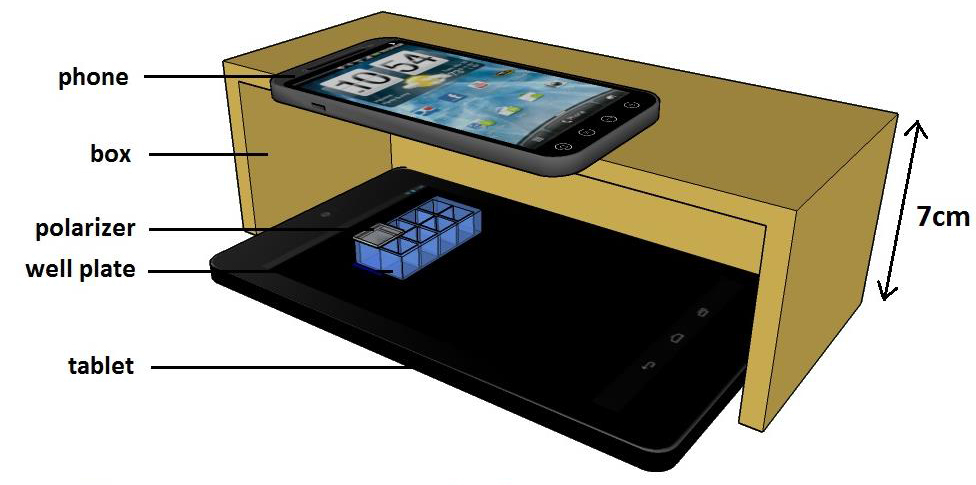Homemade bio-sensors bring great promise
 Citizen science and biological education have a new tool in their arsenal, made of objects most people already own.
Citizen science and biological education have a new tool in their arsenal, made of objects most people already own.
An Australian research team says smartphones and tablets can be reconfigured as cost-effective, portable bioanalytical devices.
The team, from the Centre for Nanoscale BioPhotonics (CNBP), an Australian Research Council (ARC) Centre of Excellence, created a simple, portable and economic biosensing device that allows for immediate diagnostic testing of arthritis, cystic fibrosis, acute pancreatitis and other clinical diseases, as well as other analytical uses.
The device is made of little more than a tablet, smart phone camera, polarizer, a box and some fancy coding.
It is based on well-established principles of fluorescent microscopy, whereby specific substances in a sample are tagged with a dye, which then light up or ‘fluoresce’ when ‘excited’ or illuminated with a high intensity light.
Samples are placed on the tablet to provide a light, a polarizer sits on top of the samples to separate the tablet light from the emissions of the samples.
This is then photographed by the smartphone, which can be analysed by the colour and intensity of the image pixels.
The researchers believe that the device has enormous potential in educational scenarios, and particularly for use in point-of-care medical diagnostics.
They say it could be a big help in remote or developing areas where professional and expensive research laboratory equipment is unavailable.
“This type of fluorescent testing can be carried out by a variety of devices but in most cases the readout requires professional research laboratory equipment, which costs many tens of thousands of dollars,” Ewa Goldys, CNBP Deputy Director, Professor at Macquarie University and author of the work explained
“There is a need to develop easy to use, portable and affordable systems, as this is preferred for point-of-care applications.”
“What we’ve done is develop a device with a minimal number of commonly available components.
“Specialised software is not required and setting up the standard commercial tablet and smartphone is very straightforward. The results can be analysed by simply taking an image and the readout is available immediately.”
Goldys believes the world will see a rapid increase in the use of smartphone technology for biomedical diagnostics and education, particularly in resource poor areas.
More details are available in the research report, accessible here.








 Print
Print